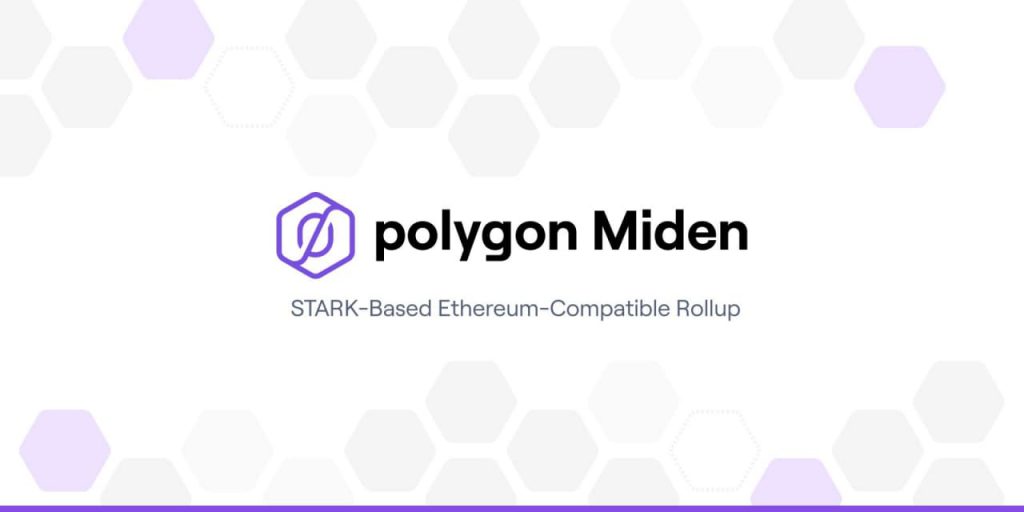Polygon – An Innovative Second Layer Solution
The following blog will introduce another cryptoasset from our dynamic portfolio – Polygon. Polygon is a scalability protocol whose main goal is to increase the speed and reduce the costs associated with transactions within the Ethereum network.

History
The beginnings of the Polygon protocol, formerly known as the Matic Network, date back to 2017. At that time, three Indian experts identified the scalability problem of Ethereum, which they decided to solve together.
The original idea for the development of the protocol came from Jaynti Kanani, the current CEO of Polygon, who first noticed the problem of scalability and high congestion in the Ethereum network thanks to the then-popular NFT project Crypto Kitties.
Kanini decided to work with Sandeep Nailwal, an Indian blockchain developer, and Anuraga Arjun, a business consultant with whom he had previously met. Three top experts from their fields joined forces and began working together on a start-up called MATIC, based in Mumbai.
Traditional blockchains such as Ethereum often fail to scale optimally under heavy load, which is associated with a continuous increase in transaction fees. These issues can hinder programmable blockchain platforms’ progress towards global adoption and optimal technological efficiency. The second tier scaling solution can act as a load balancer for networks that fail to scale continuously with increasing user activity.
MATIC was rebranded in 2021 and changed its official name to Polygon because, according to its developers, Polygon aims to become the “internet of blockchains.” Besides the name change, the rebranding also included an extension of the original scope and mission of the project.
What is Polygon?
Polygon is a framework for creating interconnected blockchain networks compatible with the Ethereum network. Polygon is a response to some of the main challenges currently facing the Ethereum network, such as high fees, poor user experience and low transaction throughput. Polygon uses secondary blockchain technology to address these challenges and relieve the main chain of the Ethereum network.
The protocol’s main goal is to create the “internet of blockchains” on the Ethereum network – this means that Polygon is trying to create a multi-chain ecosystem of blockchains that will be compatible with Ethereum itself.
Since Polygon supports Ethereum Virtual Machine (EVM), existing applications can be easily transferred to it. As a result, these applications work the same way on Polygon as on Ethereum itself, only with higher scalability and lower fees.
How does Polygon Work?
Polygon offers developers a wide range of modules that blockchain developers can use to configure their own blockchain. These include, for example, consensus and management modules or a virtual machine implementation module.
Blockchains created with Polygon modules are configured to take advantage of the Matic Proof-of-Stake sidechain, which uses network validators to speed up transactions and keep fees to a minimum. At the same time, all major operations are being completed on the Ethereum chain.
Matic PoS is a sidechain compatible with Ethereum Virtual Machine (EVM). This blockchain is secured by a set of Proof-of-Stake consensus validators and checkpoints, which are sent to the Ethereum blockchain itself.
A sidechain is a semi-independent blockchain that works in conjunction with an associated “main chain” – usually to increase its speed. The MATIC sidechain is an important part of the currently growing Ethereum ecosystem. It offers its users the opportunity to convert any decentralised application built on the Ethereum network to the MATIC side chain, mainly to improve user environment assessment.
Polygon Base Layers
The Polygon protocol architecture can be defined as a four-tier system, with each tier performing its own specific function:
- Ethereum layer – The Ethereum layer is a set of smart contracts implemented in the Ethereum system. These contracts provide various functions, from transaction finalisation and staking to ensuring communication between the Ethereum network and the Polygon chains.
- Security layer – The security layer is a layer based on voluntariness. This layer provides the ability to use “validator services” to secure blockchains operating on Polygon. Blockchains can thus increase their security with an additional layer of security.
- Polygon Network Layer – A layer consisting of the entire blockchain network ecosystem built on Polygon. However, each blockchain operating on Polygon has its own community and is responsible for the operation of its own network.
- Execution layer – The execution layer performs the agreed operations included in the Polygon chains. The Ethereum Virtual Machine is implemented in the execution layer and is used to perform these operations.
Scaling Support
The Polygon concept was created to ensure that in the future, there is an ecosystem in which the various blockchains will not function as separate entities but will be part of a broader, interoperable environment.
The Polygon protocol is designed to support a wide range of blockchain scalability mechanisms, including Plasma chains, zk-Rollups, Optimistic rollups and POS chains. All of these technologies are designed to increase the throughput of associated blockchains in the best possible way without the need for loss of decentralisation or security.
Polygon uses the following technologies to achieve its vision:
- Plasma Chains – Polygon uses scaling technology known as plasma to move assets between the main chain and the subchain using so-called plasma bridges.
- ZK-rollups – An alternative scaling solution used to group a large number of off-chain transactions into a single transaction using zero-knowledge proofs for the final public record on the Ethereum main chain. In November, Polygon introduced a protocol called Polygon Miden, which uses zero-knowledge proof to offer users greater privacy and EVM compatibility.
- Optimistic rollups – A solution that runs on top of Ethereum to enable near-instantaneous transactions through so-called “fraud proofs.”
- POS Chain – The main chain of the MATIC PoS polygon is also a side chain of the Ethereum network, which supplies the Proof-of-Stake (POS) security layer to the blockchains running on the Polygon.

Polygon Ecosystem
The most notable projects that are part of the Polygon ecosystem include:
- Polymarket – One of the most popular prediction markets in the blockchain space. Polymarket has become popular mainly due to its friendly user interface.
- Aavegotchi – A crypto collector’s game from the decentralised finance sector – players in this game put the NFT into a protocol and generate interest.
- Easyfi – Easify is a hard fork of the Compound project, which brings together a huge number of products from the DeFi sector in one place.
- SportX – Blockchain betting platform.
Besides these, many other popular DeFI and NFT projects, such as Aave, Cream Finance, Chainlink and OpenSea, operate within the Polygon ecosystem.
Native Network Token – MATIC
The native token of the Polygon protocol is the $MATIC token, which is the basic functional tool of the whole system. Besides being used for payments between users, this token also serves as a security tool for the Polygon network. MATIC token holders who want to support the network consensus mechanism can lock their tokens in the network and collect rewards for it.
In addition, the MATIC token in the Polygon ecosystem is also used for various other purposes, including participating in network management by voting on network improvement proposals (PIPs) or paying gas fees in relation to smart contracts.
Final Thoughts
Polygon has brought a new, innovative set of tools to the entire blockchain ecosystem. It seeks to alleviate the challenges facing the Ethereum network. Polygon also wants to use its innovation to predefine a future prototype in which the scalability and interoperability of independent blockchains become routine.
Invest With Fumbi Today
If you are considering investing in cryptocurrencies, Fumbi is here for you. Our algorithm-administered portfolio accurately tracks the growth of the entire cryptocurrency market.
Fumbi is the first of its kind to offer cryptocurrencies to the general public, even at small deposits. Investing in cryptocurrencies through Fumbi is very easy and minimises risks.
You can start with a deposit of just €50.
INVEST WITH FUMBIDid you come across a term you didn’t understand? Don’t worry. All essential terms regarding cryptocurrencies are in our Fumbi Dictionary.

 3 min •
3 min •



